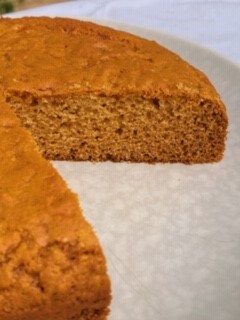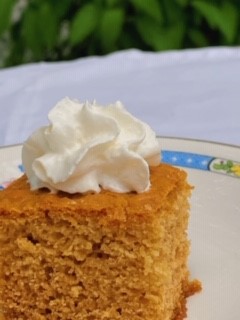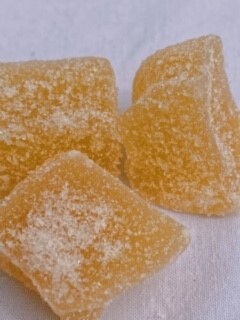A classic from my grandmother's recipe book which unlike the rich, dark ginger loaf cakes favoured by many, is a light and moist cake made with golden syrup and lots of ginger.

This was originally made using lard, probably due to war time rationing. I would suggest butter these days.
There are also no eggs in this recipe, probably for the same reason, but the bicarbonate of soda keeps it light and the golden syrup keeps it moist.
I have halved the recipe for a 20cm cake tin.
Preheat the oven to 160ºC and line the base of a 20cm loose bottomed cake tin with greaseproof paper.

225g plain flour
60g demerara sugar
60g unsalted butter
½ tbsp ground ginger
½ tsp salt
½ tsp bicarbonate of soda
125ml golden syrup
125 ml milk
Rub the butter into the flour - check out my scone recipe if you're not sure how to do this - then add the sugar, salt and ground ginger.
Heat the milk in a saucepan and add the golden syrup and bicarbonate of soda. Warm through, stirring to combine, and pour into the dry ingredients. Mix well. Put into your tin and bake in the oven for 30 minutes.
When the time is up, I was taught to put a skewer into the middle, and if it comes out clean, it's done! If not, give it another 5 minutes.
Leave it in the tin for 20 minutes or so before turning out.





















